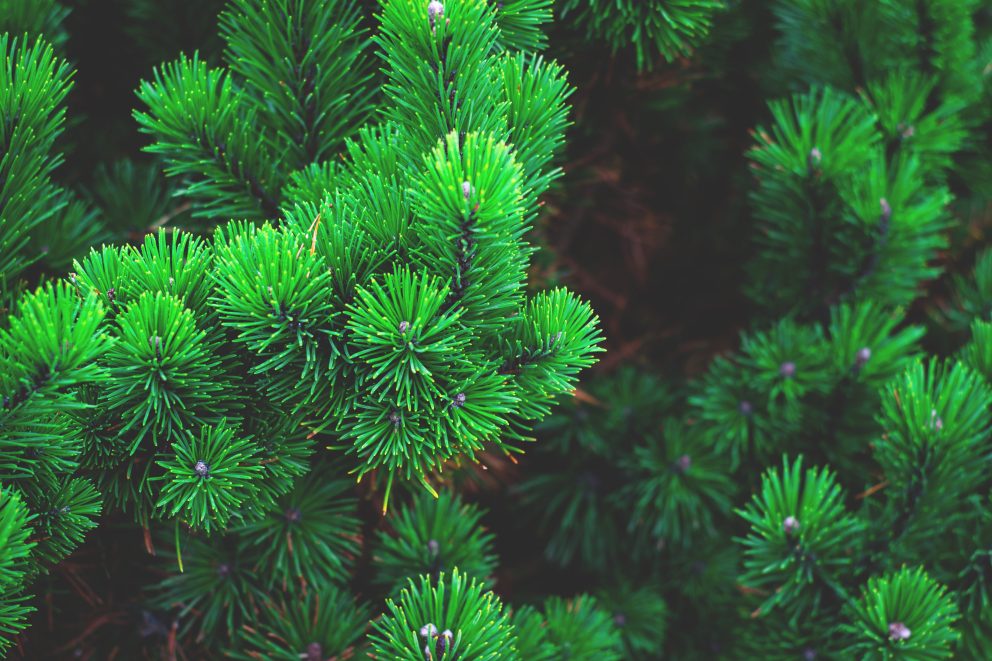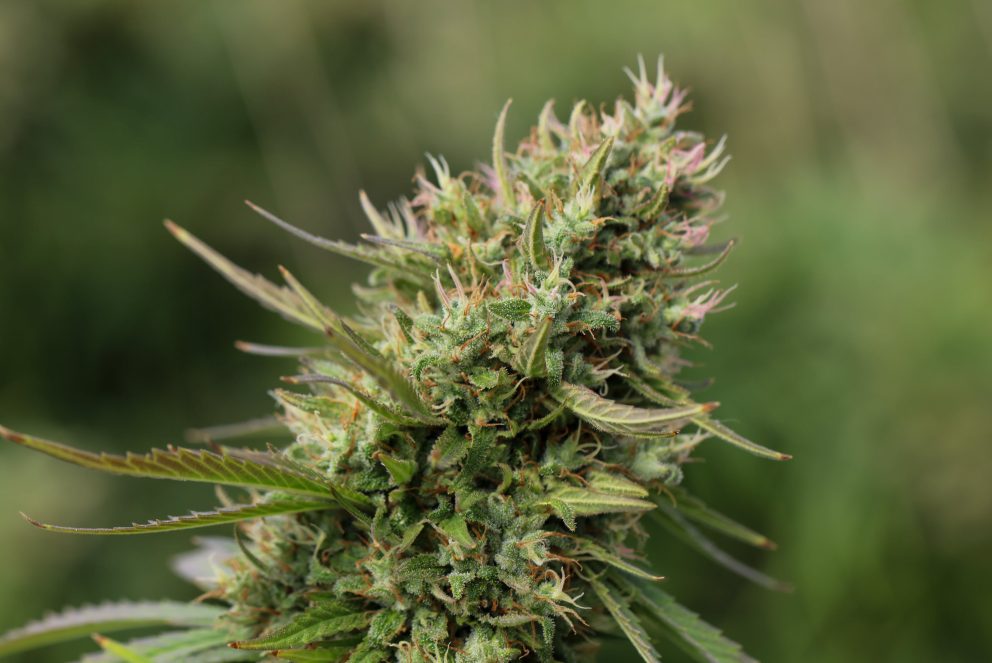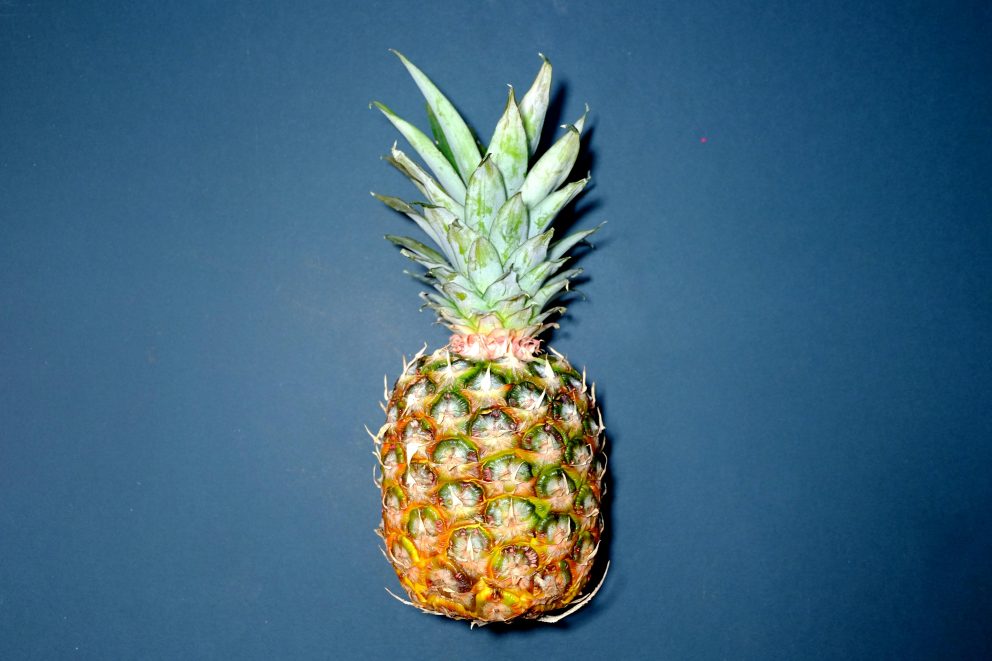
What is Pinene? Alpha-Pinene & Beta-Pinene Effects, Benefits & Strains

Photo by Lum3n
People are turning to marijuana for more than just the high. Whether for pain relief, to reduce anxiety, or to better connect with their body cannabis offers a whole host of health benefits. It’s not just due to name-brand cannabinoids like THC and CBD. Many of these benefits are due in part to compounds like pinene.
Pinene is one of the more popular terpenes. Terpenes are biological compounds that help plants thrive by giving what humans will notice as a scent or taste. However, these compounds are engaged in a whole host of biochemical interactions and do far more for plants behind-the-scenes including preventing fungal and bacterial outbreaks, and attracting animals to eat their fruit to disperse their seeds.
Terpenes serve a whole host of biological processes like repelling insects and attracting hummingbirds and bees to pollinate them. There are benefits to human beings beyond a lovely aroma, too. Some of these benefits transfer to human bodies like fighting bacteria, serving as antioxidants, and more.
In this post we’ll cover how pinene can do everything from kill bacteria to help with inflammation and even help you if you’ve gotten too high.
Apply for a Medical Marijuana Card Online Today
Join over 100,000 patients who have chosen Green Health Docs as their medical cannabis doctors. We have a 99% approval rate and offer a 100% money back guarantee!
What Is Pinene?
Pinene is one of the most common terpenes found in nature. You wouldn’t think that pine needles and orange zest get their scent from the same chemical compound but that’s what’s so interesting about the world of terpenes.
Pinene is what’s responsible for the pine essence in many coniferous trees while also providing the citrusy aroma of orange, lemon and lime zest. While limonene is also present in citrus fruits pinene does help in giving them their distinct scent.
Pinene is one of the major components of conifer extracts. The oils in these common plants, terpenes are often oily, all contain pinene. They’re even found in black peppercorns.
Pinene exists in nature as two major isomers, i.e. chemicals with the identical chemical formula but different arrangements to their molecules. Those two isomers alpha pinene and beta pinene also have a suite of different benefits.
Pinene is fairly abundant both in cannabis strains and in the plant kingdom in general from conifers to citrus to herbs and spices like sage, nutmeg and clove. That’s right your favorite pumpkin spice flavors just might be pinene rich as well as your Christmas trees making it a holiday-friendly terpene. Besides its signature scent pinene has a whole host of other benefits to the human body.
Pinene Terpene Effects
One of the most interesting benefits of pinene is that it can be utilized if you ever get too high. The cannabis industry has taken our fixation on THC and run with it. There are products like moon rocks and crystalline which can have insanely high THC levels approaching 60-90% THC.
While you don’t run the risk of a deathly overdose it is possible to suffer from psychosis or simply be ill-equipped to handle the level of high you may find with some cannabis products. If this ever happens, the pinene in peppercorns can help neutralize the THC.
This is all done via the entourage effect. Again, all of the cannabinoids, terpenes, and flavonoids in cannabis all have a series of chemical interactions with each other and throughout your body called the entourage effect. Chewing peppercorns can help get some pinene to temper the effects of too much THC.
In addition to tempering an excessive high there are a whole host of health benefits. Pinene has been found to be:
- Antibiotic
- Anticoagulant
- Antitumor
- Antimicrobial
- Antimalarial
- Antioxidant
- Anti-inflammatory
- Gastroprotective
- Anticonvulsant
- Neuroprotective
One benefit of pinene is that it offers bronchodilation which means it relaxes the airway in your bronchioles to allow for the opening of respiratory airways. This can be beneficial in treating asthma. Pinene can work with THC to help open up airways but can also combine with CBD, which has been found to reduce hyperresponsiveness in the respiratory airways helping reduce asthmatic sensitivity..
A 2020 study found alpha-pinene reduced inflammatory markers like TNF-α and IL-6 in liver cells. A 2015 study published in the American Journal of Chinese Medicine found alpha-pinene proved highly beneficial in reducing inflammation in animals.
A 2018 study showed pinene protected the skin from UV radiation by being both anti-inflammatory and an antioxidant. Antioxidants serve the body by eliminating the effects of free radicals and oxidative stress. Basically, radioactive molecules that are missing an electron try to neutralize their deficiency by feeding on cells. Antioxidants bind to these compounds in-lieu of them getting their needed electrons from our cells.
Pinene is a highly beneficial antimicrobial. Again, terpenes serve a purpose in plant life and these benefits can sometimes be applied to the humans and animals that consume them. For example, while it may serve plants by eliminating the growth of microbes like bacteria and fungus, it can do so in animals.
A 2012 study found pinene, both alpha and beta, prevented the growth of MRSA, the cause of many drug resistant staph infections. It also was shown in another study to reduce the risk of infection in lung tissue.
Those worried about anxiety who use cannabis to manage their symptoms might find benefits from pinene. A 2014 study found the inhalation of pinene helped reduce anxiety symptoms in mice.
There are also some neuroprotective properties and the ability to help with memory and cognition associated with pinene. Early animal trials found alpha-pinene may be able to help patients with Alzheimer’s Disease, dementia, amnesia, cognitive dysfunction, and overall memory loss.
The potential of pinene is still being tapped as more widespread cannabis legalization and medical marijuana prescription is adding to our collective scientific research and application of cannabis compounds like pienene.

Photo by Onxy
Strains High In Pinene
Pinene has the ability to boost and decrease cannabinoid function. It also happens to be one of the most prominent terpenes in the cannabis industry. If you’re curious about partaking in the potential of pinene, here are just a few pinene-rich strains:
- Blue Dream
- Jack Herer
- Dutch Treat
- Cinex
- Harlequin
- Sour Diesel
- Critical Mass
- Snoop’s Dream
- Big Smooth
- Cotton Candy Crush
- Grape Ape
- Remedy
- Super Lemon Haze
- Haze Berry
- OG Kush
- Strawberry Cough
- Bubba Kush
- Chemdawg 91
- Island Sweet Skunk
- Chocolope
- Cheese
- Kosher Tangie
- The Great Grape Ape Show
What Are Foods And Popular Plants High In Pinene?
Pinene is pretty common not just in cannabis but throughout the plant kingdom. Here is a list of some common fruits, vegetables and plants that contain the terpene pinene:
- Pine needles and pine trees
- Black pepper
- Rosemary
- Dill
- Basil
- Parsley
- Orange peels
- Mandarin peels
- Lemon peels
- Lime peels
- Eucalyptus
- Tea tree
- Sage
- Nutmeg
- Clove
- Thyme
- Copaiba
- Pineapple
Pinene is also one of the active ingredients in turpentine. You might think this paint solvent given its intense fumes is made from harsh chemicals but it’s actually distilled entirely from plants and includes terpinolene which is named for its turpentine scent. Pinene was first isolated in the 19th century from turpentine distilled from pine resin.

Photo by Alizee Marchand
What Is Hydrogen Peroxide Pinene?
One of the secrets to the success of pinene just might be its natural inclination to create hydrogen peroxide when exposed to air and light. In the same way that air and light can make THC go bad or degrade, this generation of hydrogen peroxide may be why it has natural antimicrobial qualities.
The prominence of pinene in nature is why it can often exist as an aerosol i.e. in our atmosphere. Its potential to create hydrogen peroxide can affect us environmentally. While excessive amounts of hydrogen peroxide can be toxic, pinene’s natural hydrogen peroxide can degrade into safe byproducts like formic acid.
Alpha-Pinene Vs Beta-Pinene
Pinene has two isomers alpha and beta-pinene. If you have heard of Delta-8 and Delta-10 THC you’ve heard of isomers. Delta-8 and delta-10 are chemically similar to traditional THC (Delta-9). However, they are slightly different in their specific chemical breakdown.
Similarly, alpha-pinene and beta-pinene are similar but different. This section will outline how those subtle chemical differences can present themselves in how these two compounds function. For example, alpha-pinene has the traditional pine tree odor while beta-pinene is more herbal and earthy in its scent.
Alpha-pinene tends to be more energizing and sativa-like, while beta-pinene can be more relaxing or indica-like. Alpha-pinene also improves concentration and focus while beta-pinene elevates your mood and serotonin level and it more readily bonds to the CB2 receptors in the endocannabinoid system which help reduce inflammation.
There is also more in the A-Pinene Vs B-Pinene debate including how these chemicals can impact the human body differently.
A-Pinene Vs B-Pinene Effects
Again, while they are somewhat chemically identical these subtle biochemical changes can affect how these chemicals interact with the human body. Here are some of the health benefits and effects of A-Pinene Vs B-Pinene.
Alpha-Pinene Effects on the human body:
- Stimulating, energizing
- Enhances focus and concentration
- Potent antimicrobial from its hydrogen peroxide conversion
- Encourages bronchodilation to open airways
- Potent analgesic (pain reducer) and anti-inflammatory
Beta-Pinene Effects on the human body:
- Relaxing, reduces stress and treats anxiety
- Potent sedative and aids sleep
- Elevates mood through increasing serotonin
- Potent anti-inflammatory by binding to CB2 receptors
- High potential of memory enhancement and being neuroprotective
Final Thoughts
Pinene is almost ubiquitous in cannabis and the plant kingdom. And yet, the potential benefits of this compound are only starting to reveal themselves. Medical marijuana is about more than just getting chemo patients high, the countless benefits to the compounds in cannabis like alpha-pinene and beta-pinene are showing some true potential to addressing countless conditions.
If you’d like to test out the pinene power for yourself consider getting your medical marijuana card. Not only does it have tax benefits in states with legal recreational cannabis it also ensures you work with your doctor to receive the countless cannabis benefits still to be discovered. To get your medical marijuana card, let Green Health Docs make the process quick and seamless.
 This article has been reviewed by Dr. Anand Dugar, an anesthesiologist, pain medicine physician and the founder of Green Health Docs. Graduating from medical school in 2004 and residency in 2008, Dr. Dugar has been a licensed physician for almost 20 years and has been leading the push for medical cannabis nationwide.
This article has been reviewed by Dr. Anand Dugar, an anesthesiologist, pain medicine physician and the founder of Green Health Docs. Graduating from medical school in 2004 and residency in 2008, Dr. Dugar has been a licensed physician for almost 20 years and has been leading the push for medical cannabis nationwide.
